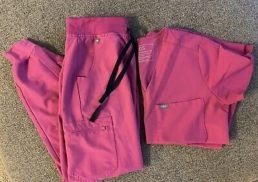Who doesn’t love the feeling of putting on a new pair of shoes? But have you ever considered how important the insole of your shoes are for your overall foot health and comfort? In this blog post, we’ll take a deep dive into the world of insoles, covering everything from their benefits to choosing the right material, and even how to properly fit and replace them. Let’s embark on a journey to help you put your best foot forward!
Table of Contents
Key Takeaways
Discover the benefits of quality insoles for foot health, comfort and pain relief.
Consider custom orthotics vs over-the-counter insoles when selecting an insole material to best fit your requirements and preferences.
Top insole brands offer a variety of products with features such as arch support, cushioning, motion control & more at affordable prices.
Discover the Benefits of Quality Insoles

Insoles promote foot health and comfort, and can alleviate foot pain. Inadequate arch support can potentially cause misalignment and pain in your body. Different insoles can ensure proper support and alignment, and provide pain relief. Besides, quality insoles can be used in most shoes, providing you with versatile support and comfort.
Don’t let tired feet ruin your day! In this world of user-friendly online shopping, you can find an array of insoles, often with free shipping, to suit a wide range of purposes and requirements. Whether you’re suffering from plantar fasciitis, flat feet, or high heels discomfort, there’s an insole out there designed specifically for your needs.
Custom Orthotics vs Over-the-Counter Insoles
When it comes to insoles, you have a choice: custom orthotics from a podiatrist or standard shoe insoles available at your local store. Custom orthotics provide tailored support, designed specifically for your feet, offering a higher degree of support than over-the-counter insoles. On the other hand, over-the-counter insoles provide a more general level of support at a regular price, making them super comfy and accessible for most people.
One brand that offers personalized support for unique footprints is Tread Labs. They have four different arch heights and three levels of support: Ramble for comfort, Pace for pain relief, and Dash for performance.
Understanding the differences between custom orthotics and over-the-counter insoles empowers you to make a decision that suits your needs and budget.
Choosing the Right Insole Material
Insoles are made from various materials, including:
Leather
Cellulose
Leatherboard
Non-woven fabric
Fiberboard
Foam
Acrylic
Polypropylene
Fiberglass
EVA
Cork
Thermoplastics
For example, Tread Labs features a two-part system consisting of a molded arch support and a 100% recycled polyester interchangeable top cover. The interchangeable top cover allows you to replace it when worn out, saving money and reducing waste when getting a new pair.
Consider factors such as foot type, activity level, and budget when selecting an insole material. Different materials offer levels of cushioning, support, and durability that vary, so it’s important to choose the material that aligns with your requirements and preferences.
Insoles for Common Foot Problems
Insoles can provide cushioning and support to alleviate pain and discomfort related to common foot problems like plantar fasciitis, flat feet, and soreness from wearing high heels. There is a variety of insoles available to address these issues, including foam, gel, and leather options. To ensure the best fit and continued support, it’s important to measure your foot before purchasing insoles and replace them when they become worn out.
Understanding the specific needs and challenges associated with common foot problems can guide you to the right insole for optimal support and relief. Let’s explore some insoles designed to address these issues and improve your daily comfort.
Plantar Fasciitis Relief
Plantar fasciitis is an inflammation of the plantar fascia, a band of tissue that connects the heel bone to the toes. Insoles for plantar fasciitis relief should provide arch support, cushioning, and shock absorption to alleviate pain and discomfort.
One such insole is the Pace insole, designed to provide relief for individuals suffering from plantar fasciitis or overpronation. Implementing insoles tailored to reduce pain and discomfort from plantar fasciitis can help you enjoy your daily activities pain-free.
Flat Feet Solutions
Flat feet can result in discomfort and pain due to the lack of arch support. Solutions for flat feet are designed to provide additional support and stability to the arches of the feet, thereby improving foot alignment, distributing pressure more evenly, and reducing discomfort and pain.
Insoles such as Superfeet Green, Powerstep Pinnacle, and Tread Labs Stride are all designed for flat feet, offering support and stability for your arches. Insoles like these can bring relief and improved comfort in daily activities to individuals with flat feet.
High Heels Comfort
High heels may look fabulous, but they can also cause significant discomfort and pain. Insoles designed for high heel wearers can provide a deep heel cup for:
Cushioning and support
Shock absorption
Pressure reduction
Improved shoe fit
Prevention of slippage and friction
Some recommended insoles for high heels include Insolia Vivian Lou, Scholl’s Ball of Foot Cushions for High Heels, and HighStep insoles. These insoles are designed to provide support and cushioning, reducing pain and discomfort associated with wearing high heels. The right insoles allow you to strut your stuff without giving up comfort.
Insoles for Athletic Performance

Aside from alleviating pain and discomfort from common foot problems, insoles can also play a significant role in enhancing athletic performance. Insoles designed for running, hiking, and sports-specific activities can offer comfort and relief while optimizing performance.
Whether you’re a seasoned athlete or a weekend warrior, the right insoles can make all the difference in your performance and enjoyment of your chosen sport. Let’s dive into some insoles designed to improve athletic performance across various activities.
Running Shoes Support
Running shoe insoles should provide support, cushioning, and shock absorption to ensure proper foot alignment and reduce the risk of injury. Some recommended insoles for running shoes include:
Superfeet Run Comfort Insoles
Scholl Gel Sport Insoles
CurrexSole
SOLE Footwear Running Insoles
Tread Labs
AETREX Speed Insoles
Different materials like:
Gel
Cork
Leather
PU
Latex
Foam compounds
offer cushioning and absorb impact during running, while Sorbothane is recognized as one of the most efficient energy-absorbing materials for shock resistance. Incorporating the right running shoe insoles can enhance your running experience and decrease the risk of injuries.
Hiking and Walking Comfort
Hiking and walking demand comfort and stability on various terrains. When selecting insoles for hiking shoes, it’s important to consider factors such as:
Firmness
Stability
Shock absorption
Durability
Arch support
Comfort
Some recommended insoles for hiking and walking include those specifically designed for hiking boots, outdoor activities, and long walks. Implementing these insoles ensures the necessary support and comfort for your hiking and walking adventures, making it easier to go the extra mile.
Sports-Specific Insoles
Sports-specific insoles are tailored to the unique demands of different athletic activities. These insoles provide several advantages for athletes, including:
Alleviating pain
Enhancing stability
Averting injuries
Optimizing performance
Providing tailored support
Some examples of sports-specific insoles include:
Game Day insoles
Upstep Basketball Custom Orthotics
Tread Labs Pace insoles
VKTRY Insoles
SOLE Active Medium insoles for basketball players
Sports-specific insoles can significantly boost your performance and prevent injuries, enabling you to excel in your athletic endeavors.
How to Properly Fit and Replace Insoles
For optimal foot health and comfort, it’s important to properly fit and replace your insoles. Measure your foot before purchasing insoles and replace them when they wear out for continued support and comfort.
Let’s explore some tips on how to accurately measure your foot for the perfect insole fit and learn when it’s time to replace your insoles.
Measuring Your Foot for the Perfect Fit
Accurately measuring your foot is essential to ensure the perfect insole fit. To do this, you’ll need a measuring tape or ruler, a Brannock device, a white piece of paper, and a pen or pencil. To measure your foot size for an insole, follow these steps:
Position a piece of paper on the floor.
Stand on the paper and have someone trace the outline of your foot.
Use a ruler or measuring tape to measure the length from the tip of your longest toe to the point of maximum length on the traced outline.
Measure the width of your foot by measuring the widest part.
Measure the height of your heel.
Repeat these steps with the other foot to ensure precision.
Keep in mind that men’s and women’s shoe sizes are typically distinct, so the measurements for their insoles will also vary. Always utilize the appropriate size chart or guide for each gender when measuring foot size for insoles.
When to Replace Your Insoles
Insoles should be replaced every 6-12 months, depending on the amount of use. Indications of a worn-out insole include:
Discoloration
Fading of the logo
Visible impressions from the foot
Uneven wear on the soles of the shoes
Sensations of pain or discomfort while wearing the insoles
Different insole materials may have varying replacement timelines, but generally, it is recommended to replace orthotic inserts or shoe insoles every 6 months to a year. The exact timeline may be impacted by factors such as individual wear and tear and the material of the insoles.
Top Insole Brands and Their Offerings
When it comes to insoles, some popular brands stand out for their quality and range of offerings. Superfeet, Powerstep, and Tread Labs are among the top insole brands, each providing a variety of products to cater to different needs and preferences.
Examining these top insole brands and their product offerings can help you find the perfect insole for your needs.
Superfeet
Superfeet has developed a cost-effective podiatric orthotic for all, with a selection of insoles including:
Green
Orange
Berry
Blue
Carbon
Copper
Black
merinoGrey
Priced at $54.99, the Superfeet Green insole is an economical yet professional-grade orthotic support and comfortable insole.
Superfeet offers support for a wide range of footwear types, including:
Dress shoes
Athletic shoes
Casual shoes
High heels
Fashion boots
Cowboy boots
Cleats
With a wide range of options, Superfeet has an insole to suit every need and activity.
Powerstep
Powerstep insoles are designed to provide:
Arch and heel support
Cushioning for added comfort
Motion control to limit excess stress
Deep heel cradle for stability and support
Podiatrist-designed orthotic arch
Anti-microbial top fabric to maintain heat and perspiration levels.
Powerstep offers a variety of insoles, including the Pinnacle Insoles and Pinnacle Breeze Arch Pain Relief Insole, which are highly recommended for plantar fasciitis and flat feet. With prices ranging from $39.50 to $49.95, Powerstep insoles provide exceptional support and comfort without breaking the bank.
Tread Labs
Tread Labs offers a range of insoles with a lifetime guarantee, including Pace Insoles, Ramble Insoles, and Dash Insoles, as well as insole kits such as the Ramble Insole Kit, Pace Insole Kit, and Dash Insole Kit. Constructed with open-cell polyurethane foam and 100% carbon fiber arch supports, Tread Labs insoles are designed to address foot issues such as plantar fasciitis, flat feet, overpronation, high arches, and supination.
With Tread Labs, you can find the perfect insole to suit your needs and enjoy a lifetime of support and comfort. Their innovative design and quality materials make them a top choice for those seeking the best in insole technology.
Learn more, visit The 10 Best Insoles, Tested and Reviewed.
Summary
In conclusion, insoles play a vital role in promoting foot health and comfort, addressing common foot problems, and enhancing athletic performance. By understanding the differences between custom orthotics and over-the-counter insoles, choosing the right insole material, and measuring your foot for the perfect fit, you can optimize your foot support and overall comfort.
Don’t let foot pain and discomfort hold you back. Explore the world of insoles, and discover the perfect solution for your needs. With the right insoles, you can step out in confidence and enjoy every stride.
Frequently Asked Questions
What is the difference between insoles and inserts?
Insoles and inserts are essentially synonymous terms used to describe shoe inserts that provide cushioning and shock absorption. However, inserts typically refer to aftermarket insoles, whereas orthotics are designed to address specific foot disorders. Inserts can also include heel inserts, liners, ball of foot cushions, arch supports, and metatarsal pads.
Are insoles covered by FSA?
Yes, insoles are covered by FSA as they are listed on the official eligibility list and can also be reimbursed with an HSA or HRA.
Do you buy insoles the same size as your shoe?
Yes, you should buy insoles that match the size of your shoes. For most insoles, they are designed to fit a range of sizes and can be trimmed down to the perfect fit. To ensure a good fit, make sure to select an insole that corresponds with your foot measurements.
What are the benefits of using insoles in high heels?
Insoles in high heels provide cushioning, shock absorption, reduced pressure, improved fit, and prevention of slippage and friction, making them a great option for those looking to make their high-heeled shoes more comfortable.
Which insoles are most suitable for high heel comfort?
Insolia Vivian Lou, Scholl’s Ball of Foot Cushions for High Heels, and HighStep insoles are the most suitable for high heel comfort.









